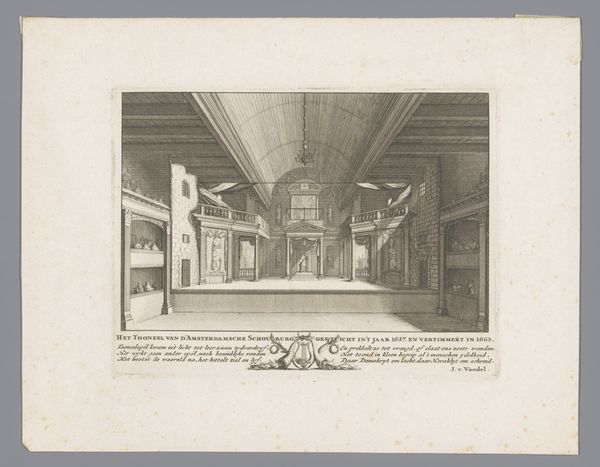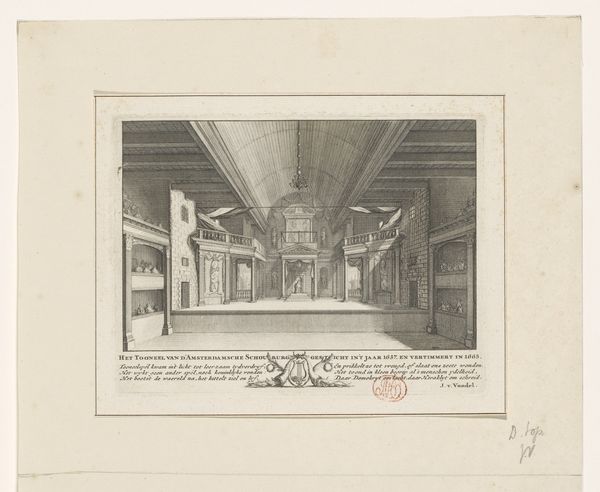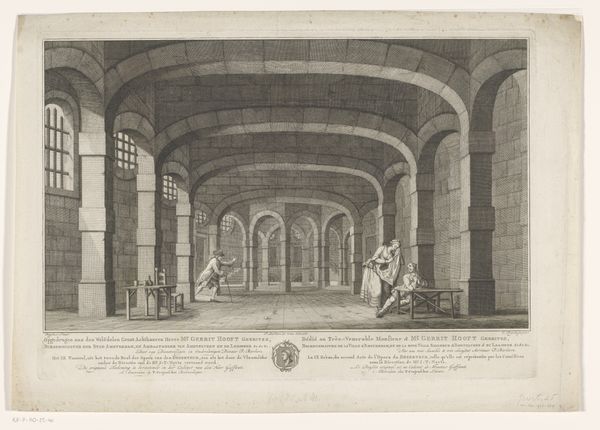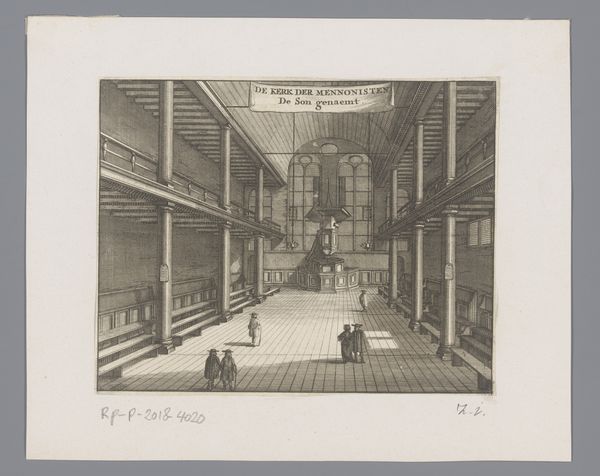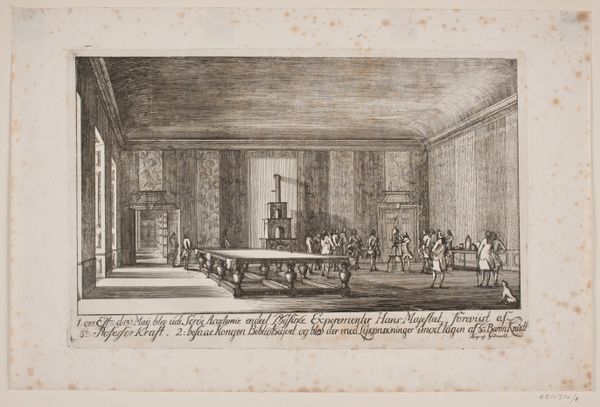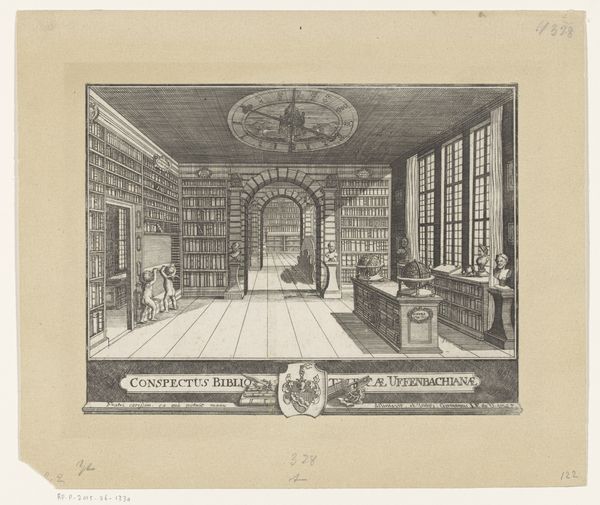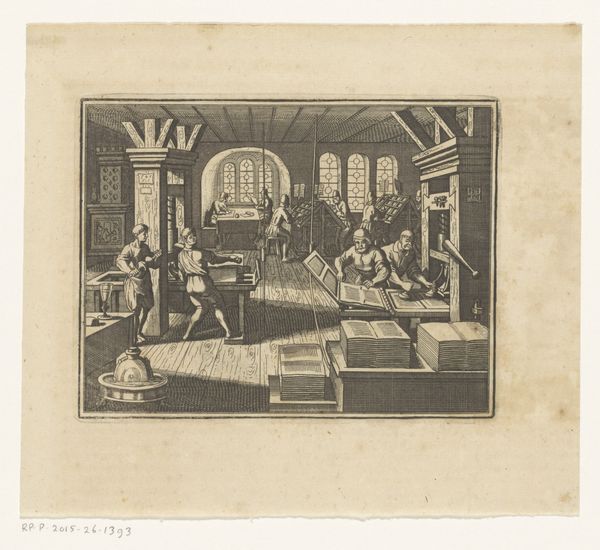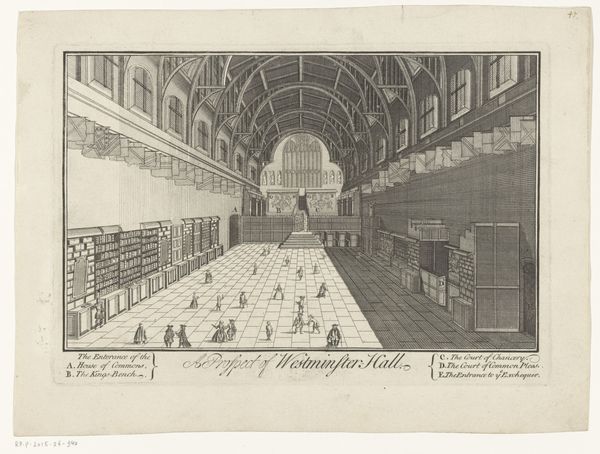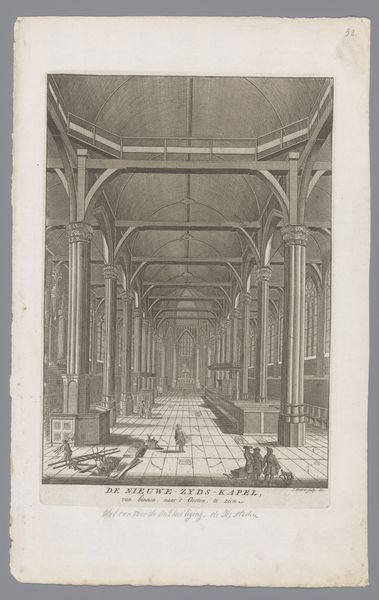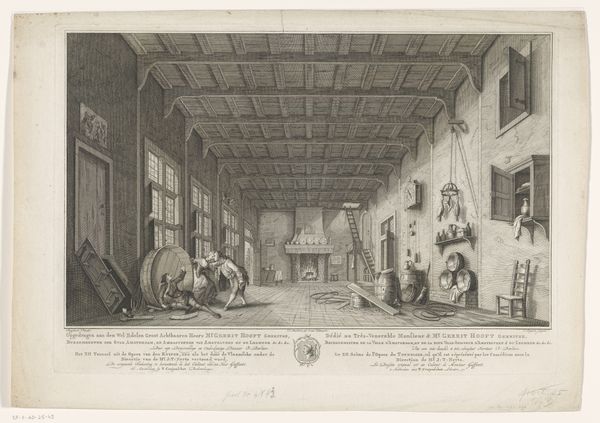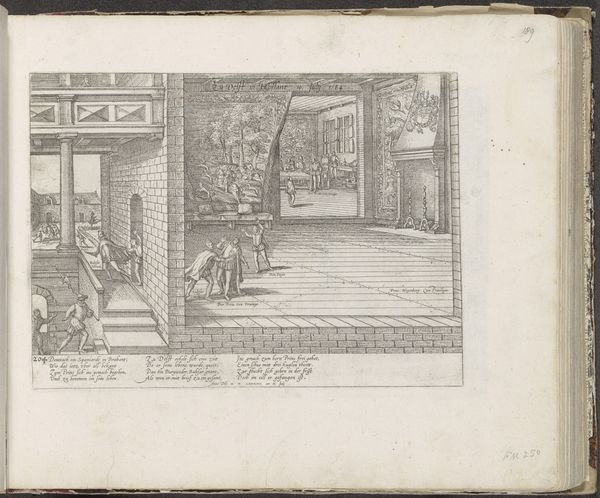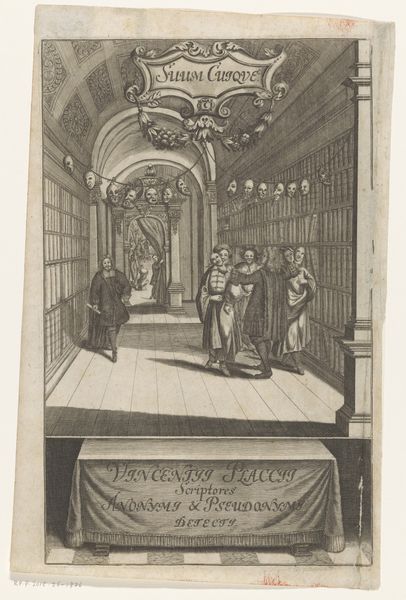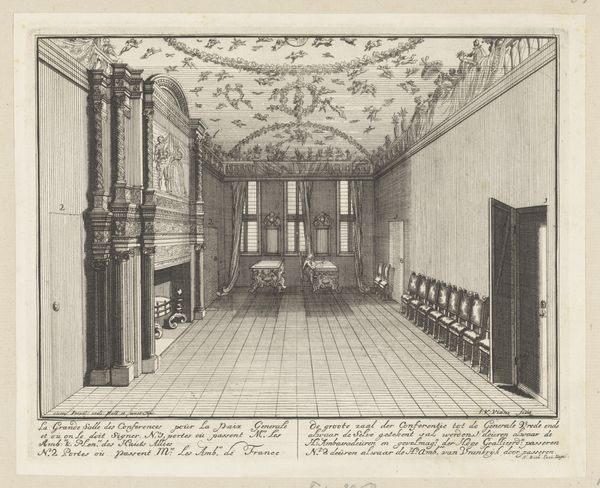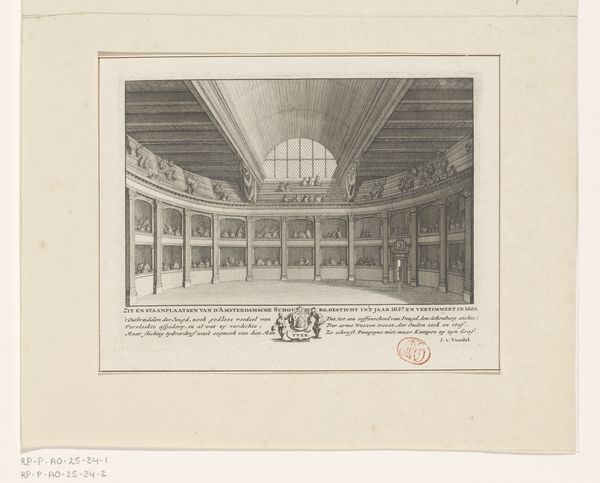
drawing, print, paper, ink, engraving
#
portrait
#
drawing
#
medieval
# print
#
paper
#
ink
#
cityscape
#
genre-painting
#
history-painting
#
engraving
Dimensions: height 173 mm, width 262 mm
Copyright: Rijks Museum: Open Domain
Johannes Meyer created this print of the Wasserkirche in Zurich, using etching and engraving techniques. Look closely, and you'll see how Meyer meticulously built up the image, line by line. The sharp precision of the engraved lines gives structure to the architecture, while the more fluid etched lines add depth and shading to the figures and the rows of books. The act of engraving, cutting into the metal plate, demanded immense skill and patience. Each line represents a deliberate decision, a commitment etched in metal. Consider this in contrast to the content of the image. The Wasserkirche was not just a church, but a center of intellectual life in Zurich, holding a vast library. In Meyer’s time, the printing press had already revolutionized the dissemination of knowledge. Prints like this one played a crucial role in circulating images and ideas, making knowledge accessible beyond the elite. So, by understanding the labor-intensive process of printmaking, we can appreciate its vital role in shaping social and cultural values, bridging the gap between craft and the wider world of knowledge.
Comments
No comments
Be the first to comment and join the conversation on the ultimate creative platform.
